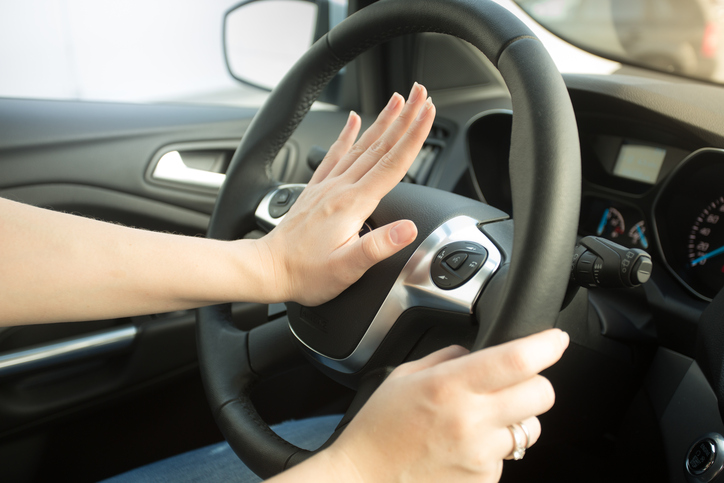Do these statistics worry you? They should. In fact, aggressive driving behavior should concern all of us. It only takes one driver, one moment in time, one poor decision, one crash to change lives forever. We must all do a better job making our roads safer.
Many people who have aggressive driving habits don’t realize that they are jeopardizing their safety, as well as the safety of others on the road.

Typically, male drivers between the ages of 19-39 are more likely to engage in aggressive behavior.
Are you an aggressive driver?
Take this short quiz to find out where you stand on aggressive driving.
Do you pass vehicles only on the left?
Do you maintain appropriate distance when following other cars, motorcycles, or bicycles?
Do you come to a complete stop at stop signs?
Do you avoid accelerating through yellow lights?
Do you use your turn signals for turns and lane changes?
Do you avoid using your horn to move other drivers out of your path?
Do you use your horn to move other drivers out of your path?
Do you avoid speeding up when a vehicle tries to pass you?
Do you yield to pedestrians?
Do you avoid commenting about other driver’s performance?
0 “No” Answers:
Excellent! You demonstrate safe driving habits. Keep up the good work.
1-2 “No” answers:
You tend to follow the rules and show self-restraint when driving. However, there’s room for improvement. Even one instance of aggressive driving behavior can be fatal.
3 or more “No” answers:
Your answers indicate aggressive driving habits. Seemingly nonthreatening actions like honking to show annoyance or making angry gestures can lead to more serious behavior like speeding to cut off other drivers, bumping another vehicle, or even getting out of your car to confront another driver.
Typically, male drivers between the ages of 19-39 are more likely to engage in aggressive behavior. They’re more than three times more likely than female drivers to exit their vehicles to confront others. And drivers living in the Northeast United States show tendencies to angrily yell, gesture or honk at others.
Of course, not every driver in these groups displays road rage tendencies, but there’s enough statistical data to tell us that there is an aggressive driving problem on our roads. It’s normal to experience frustration behind the wheel, but we can’t let emotion rule our driving habits.
How to avoid aggressive driving behavior?
Many insurance companies won’t cover collision damage caused by reckless behavior. A road rage incident on your record could actually raise your rates substantially. That is, unless your insurance company decides to bypass the rate increase altogether and simply drop you as a client.
Follow these tips to help keep you safe and in control when you’re behind the wheel:
· Avoid driving during rush hour when possible
· Use traffic reports to prepare for (or avoid) possible traffic build up locations
· Give yourself plenty of time to reach your destination to avoid the stress of being late
· Don’t take incidents personally. You don’t know what emotional condition another driver is experiencing. If they want to change lanes in front of you, ease off the accelerator and let them
· Some things like red lights and traffic jams are out of your control. Getting angry won’t change them. Listen to relaxing music and try to enjoy your journey
Remember, you are only responsible for your behavior. If another driver angrily confronts you, don’t escalate the situation. Avoid eye contact. Don’t respond to hand gestures. And never use your vehicle as a weapon. If you must respond, be courteous, acknowledge any mistake you might have made, and give the other driver plenty of room. Our safety depends on it.
If you want to learn more defensive driving techniques visit www.drivesafeonline.org.

Patrick M. is Editorial Director for the always expanding DriveSafe Online library of courses. With over two decades of experience developing award-winning training, he now focuses on innovating online driver safety training. Pulling from his background in journalism, he steers the wheel behind the creation of top-tier content that promotes a better journey—whether on the digital highway of learning or the real roads we travel every day.
